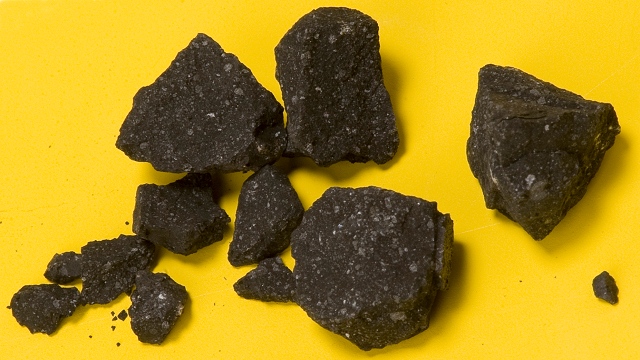On Sunday morning, April 22, 2012 a bright fireball streaked westward over the Reno-Tahoe area, rattling homes with a sonic boom. Shortly afterward, residents of El Dorado County heard the whistling sounds of falling meteorites. Weather radar tracked the hail of stones in midair, and the experts outlined a probable strewnfield centered on the site of Sutter's Mill, the place that launched the California Gold Rush in 1848. Soon a meteorite rush began as the story hit the news. Today, eight months later, the journal Science has published intimate details about this leftover piece from the solar system's infancy.
Meteorites are samples of the asteroids, which orbit the sun in the gap between Mars and Jupiter. Today, after more than 4 billion years of collisions with each other, they are mostly broken chunks of rock and iron. A handful of the largest asteroids still have their original form of little planets, with iron cores and rocky mantles like Earth or the Moon, although they're pretty banged up.
Back in April it made me thrill to hear that the Sutter's Mill rocks were of the type called carbonaceous chondrite ("CON-drite"). This is older stuff that escaped processing in a mini-planet asteroid. It lets us peek beyond the birth of the planets to the original cloud of interstellar gas and stardust—the nebula—that first formed the sun and solar system.
According to the Science paper, the Sutter's Mill meteorite started out as a rock the size of a minivan, 2 to 4 meters across. It entered the atmosphere at 28.6 kilometers per second, twice as fast as most meteorites. The rock shattered from the shock at an altitude of 30 miles, producing an explosion of about 4 kilotons yield. Thousands of pieces quickly slowed down to ballistic speed, getting a thin blowtorched crust during the second or two they were supersonic.

Scientists from the SETI Institute and NASA Ames Research Center, led by meteor specialist Peter Jenniskens, made an aerial survey of the strewnfield, looking for craters, and found none. For that they hired the airship Eureka in one of the Bay Area zeppelin's most unusual missions. (Alas, the Eureka is no more.)

